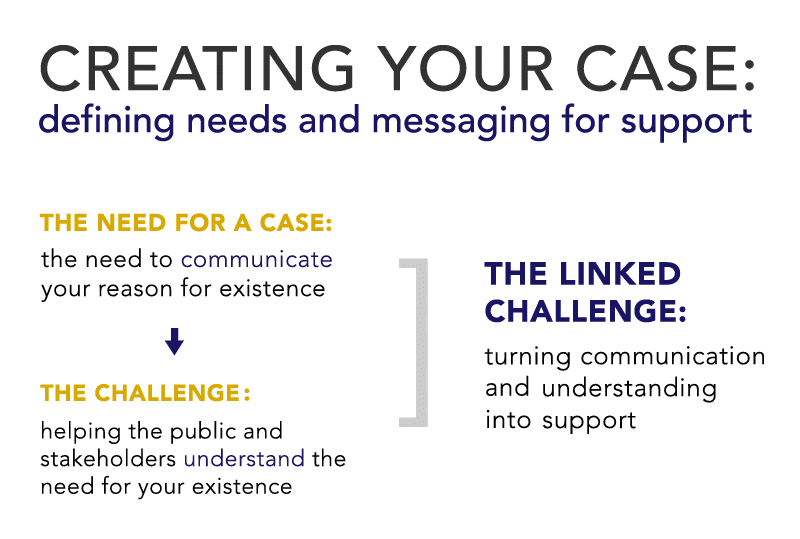So You Need To Write a Case Statement: A Helpful Outline to Stating Your Case
A case statement is an important document, but it can be a daunting one to write. In four to six pages, you must be able to clearly communicate your various campaign themes concisely, explain why your nonprofit organization is important, and demonstrate how your nonprofit has been successful in the past.
To help, we have created a a common outline for case statements that can serve as an outline to guide your writing. To customize this outline to fit your needs, consider your audience and purpose and write with both in mind to keep your nonprofit case statement effective and focused.
Before we begin, let’s look at the major components within a case statement and the challenges within each component.

As you can see, a case statement must set up why your nonprofit is important. Then it must make your audience understand how your organization is important through community impact and accomplishments. After your nonprofit’s importance is both communicated and understood, the linked challenge is generating support for your campaign.
To begin, let’s start with introducing your nonprofit.
STEP 1: The Introduction
Like most documents, a case statement needs a strong introduction. But unlike a lot of documents that stick to the cut-and-dry (emphasis on dry!), the point is to be compelling and draw your reader in. Think about your own interest and passion in your nonprofit’s cause and what first kindled those feelings in you, and try to convey those feelings to your reader.
- Who are we? Describe the make-up of the organization.
- Do we have a beneficiary/client story that explains our work?
STEP 2: Your Vision
Here you want to talk about your organization’s strengths and how you will use them to move toward your future goals. Show the readers that you know the direction you’re moving in and what value this brings to the community.
- Where are you going?
- Why is it important? Why does the community need your vision?
STEP 3: The Campaign
Now that you’ve laid out for vision, describe the actionable steps your organization is going to take to accomplish the vision of the campaign. Tell the reader about the most important steps, and be sure to include what you will spend on each. Explain how each component relates to the overall vision.
- What is our approach to solving this problem and issue?
- How exactly will we work to solve this problem going forward?
- How does this specific campaign solve this problem while carrying out the vision of the organization?
STEP 4: The Donor’s Role
Describe how the participation of potential donors will ensure the organization’s future. If your audience is potential donors, tell them how the organization will be improved by successful campaign. They will want to know what your organization look, feel, and act like after the campaign.
- How can donor support help the organization? Show a financial model and give numbers.
- What are some specific examples of donor support making a difference in this campaign or in solving this issue?
STEP 5: Reinforce With Facts + Enhance With Visuals
You’ve probably been working facts and figures into the document as you go. Take some time to go back and reinforce areas that might need it with supporting statements that contain proof of your organization’s accomplishments. Demonstrate your progress.
At the same time, go back and look for areas that can be reinforced with engaging visuals, whether they be images, graphics, videos, or charts. Visuals provide an emotional connection to content and can seal the entire case statement into an effective package.
Finally, here are some guiding tips to leave you with as you write your case statement:
- Be Simple.
- Be Definitive.
- Use Stories.
- Don’t Assume They Know You.
- Use Strong Language.